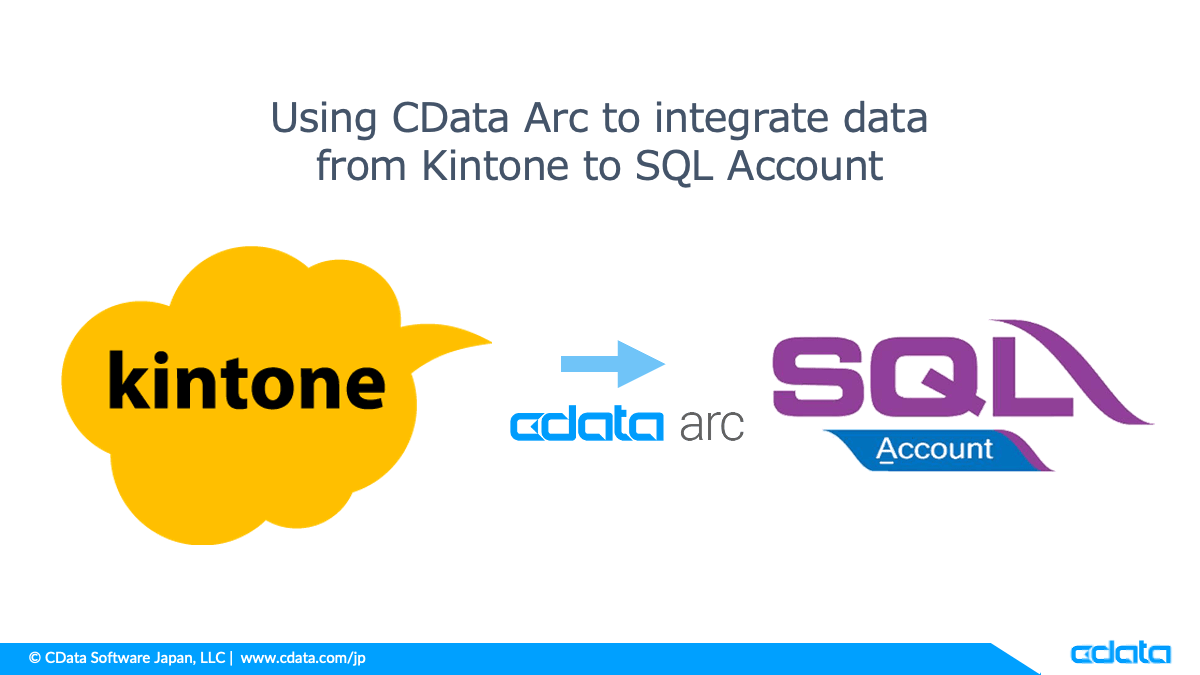Discover how a bimodal integration strategy can address the major data management challenges facing your organization today.
Get the Report →CData Software - Knowledge Base
Latest Articles
- Replicate Data from Multiple Files in an Amazon S3 Bucket Using CData Sync
- Replicate Data from Multiple Local Files Using CData Sync
- Driver Guide: Marketing Analytics Predefined Reports
- Displaying Data from Related Tables Using Angular with Connect Server
- Deploying CData Sync in a Kubernetes Environment
- Excel Add-In Getting Started Guide
Latest KB Entries
- Jetty Security Notice Overview
- Upsert Salesforce Data Using External Id in SSIS
- NuGet Repository Overview
- SAP Drivers Overview
- Embedded Web Server (.NET) - Potential Medium Security Vulnerability
- Configuring Incremental Replication in CData Sync
ODBC Drivers
- [ article ] Connecting to ODBC Data Sources in Google Apps ...
- [ article ] A Comparison of Database Drivers for SQL Server
- [ article ] Connecting to Any ODBC Data Source as a Linked ...
- [ article ] Create Data Visualizations in Cognos BI with ...
JDBC Drivers
- [ article ] REST Easy with CData Drivers
- [ article ] Using CData JDBC Drivers in ColdFusion
- [ article ] A Comparison of Database Drivers for SQL Server
- [ article ] Enable the CData JDBC Driver for QuickBooks in ...
SSIS Components
- [ article ] A Performance Comparison of Drivers for ...
- [ article ] Download files from a SharePoint site using the ...
- [ article ] Connect QuickBooks to SQL Server through SSIS
- [ kb ] CData SSIS Packages for Azure Data Factory
ADO.NET Providers
- [ article ] A Performance Comparison of Drivers for Azure ...
- [ article ] Connect QuickBooks to SQL Server through SSIS
- [ article ] Visualize your Salesforce Data in Tibco Spotfire
- [ article ] Perform API Operations Using the CData SharePoint ...
BizTalk Adapters
- [ article ] How to Generate Updategrams with the CData BizTalk ...
- [ article ] How to Generate SQL Command Schemas for the CData ...
- [ article ] Configure a One-Way Send Port for the CData ...
- [ article ] How to Execute Stored Procedures with the CData ...
Excel Add-Ins
- [ kb ] Excel Add-In: Retrieving Custom Reports Using ...
- [ article ] Insert Invoices with the Excel Add-In for ...
- [ article ] Install a Microsoft Excel Add-In Manually
- [ article ] Transfer data from Excel to QuickBooks using the ...
API Server
- [ article ] How to Build Dynamic React Applications with ...
- [ article ] Connect to Dynamics NAV with the CData OData ...
- [ article ] Launch the API Server AMI on Amazon Web Services
- [ article ] Create OData Services with the Salesforce Data ...
Data Sync
- [ article ] CData Sync - History Mode
- [ article ] Configuring Clustering for CData Sync
- [ kb ] CData Sync Truncation Errors
- [ article ] Get Started with CData Sync for Marketo
Windows PowerShell
- [ article ] PowerShell Cmdlets Getting Started Guide
- [ article ] Start and Stop Windows Services Using the CData ...
- [ article ] Import QuickBooks Online Data to QuickBooks ...
- [ article ] Query Google Calendars, Contacts, and Documents ...






